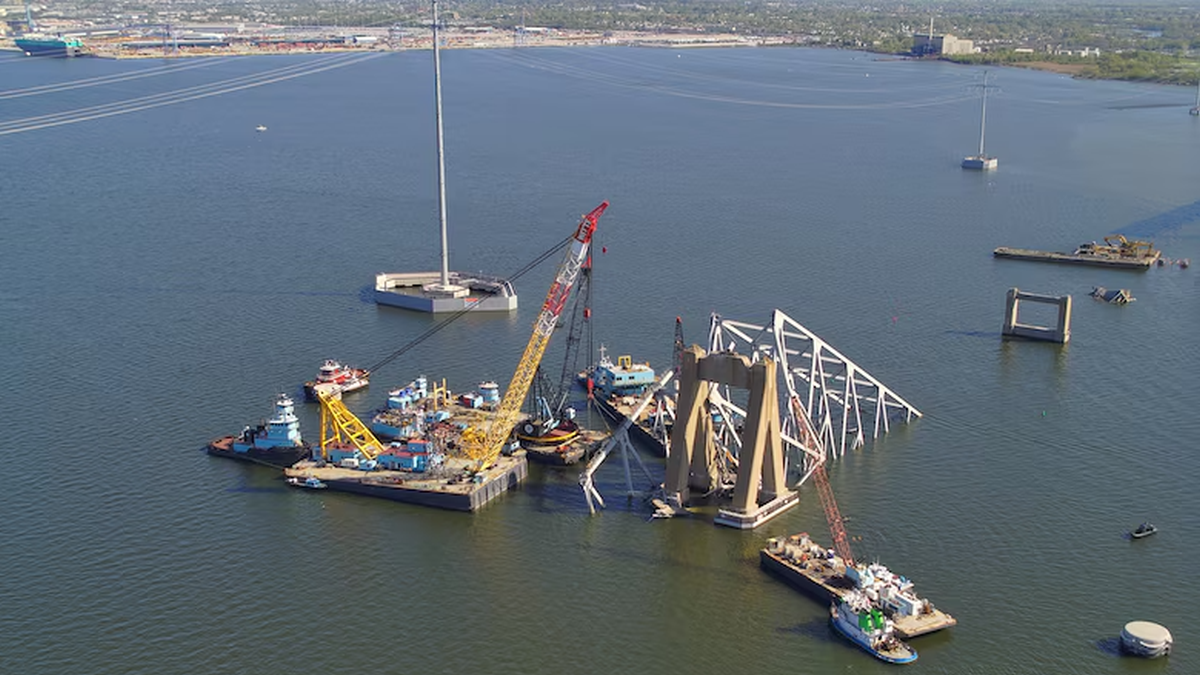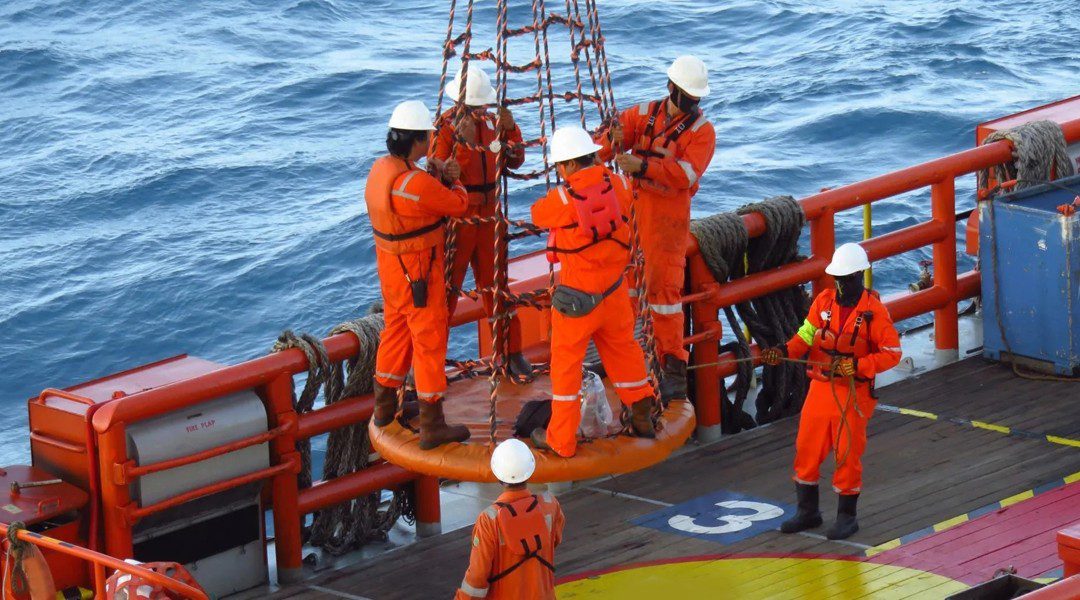 A 560-tonne steel section of the Francis Scott Key bridge in Baltimore is removed (source: /public /photo by MST1 Claudio Giugliano)
A 560-tonne steel section of the Francis Scott Key bridge in Baltimore is removed (source: /public /photo by MST1 Claudio Giugliano)
Salvors have opened a deeper fourth channel to the port of Baltimore
Operations to remove debris from thefallen Francis Scott Key bridge in Baltimore have cleared a fourth shipping channel to the port during the same week that both the city of Baltimore and at least one private company have filed lawsuits against the shipowners and shipmanagement company for the 9,962-TEU container shipDalithat struck the bridge and caused its collapse.
The newly opened, 35-foot-deep (11-m-deep) channel was cleared with the removal of a 560-tonne section of steel bridge truss, according to the US Army Corps of Engineers (USACE). The timing of the opening of the new channel is on track with the tentative timeline the USACE provided earlier in April.
“This is a step on the journey,” said Maryland Governor Wes Moore, “but it’s not the destination. We have to and we will open the full, federal channel.”
“This still remains a remarkably complex situation. Our team are double-tracking,” he said, explaining that the term describes the fact that salvage operations are ongoing while commercial traffic is transiting in and out of the port.
“Members of Unified Command are literally pulling steel from the water with active vessels moving around them,” he said.
The governor said the opening of the new, temporary 11-m deep channel would allow “several ships” that have been unable to leave since container ship Dali struck the bridge and caused its collapse in March, to leave Baltimore.
The latest channel is another temporary measure in the salvage operation Unified Command’s plan to reopen a full-depth channel to the port, and Governor Moore discussed the next steps in the process.
“Unified Command will briefly suspend transit through the 35-foot [11-m-deep] channel, and ensure the salvage team can safely and efficiently complete their work on our ultimate goal of reopening the 50-foot [15-m-deep] channel,” Governor Moore said.
The new, limited access channel has a controlling depth of more than 10m, a horizontal clearance of more than 90 m, and a vertical clearance of more than 65 m.
With wreckage cleared in the new channel, the USACE said it will complete sonar surveys while the US Coast Guard (USCG) adds navigational aids, and the National Oceanic and Atmospheric Administration issues updated navigational charts.
The operation’s Unified Command said that beginning 29 April, continuing operations to removeDaliwill require a suspension of transits through the new access channel but that the channel will be reopened “once deemed safe”.
“We’re working to strike a balance between enabling temporary access to support commercial activity and undertaking necessary measures to fully reopen the Fort McHenry Channel,” said USCG Captain David O’Connell, Captain of the Port and Federal On-Scene Coordinator, Key Bridge Response 2024. “This limited access deep-draft channel will provide a window for five of the deep-draft vessels currently unable to depart the port as well as some smaller deep-draft vessels to transit.”
Earlier in the week, the city of Baltimore filed a lawsuit againstDali’s owner, Grace Ocean, and its manager, Synergy Marine, alleging the collapse of the Francis Scott Key bridge came as a direct consequence of “gross negligence, and recklessness, and as a result of the unseaworthiness of the vessel”. The lawsuit, filed in the US District Court of Maryland, also asked for a jury trial.
Singapore-based Grace Ocean and Synergy Marine petitioned the same court for limited liability in the incident on 1 April, using a US maritime law from the 19th century and estimating their liability in the incident at less than US$50M. The following court filing from the city of Baltimore’s mayor Brandon Scott and the city council, filed on behalf of the city’s residents, called the figure of US$43.6M proposed by Grace Ocean and Synergy Marine “substantially less than the amount that will be claimed for losses and damages arising out ofDali’s allision with the Key Bridge”.
According to a report in the Washington Post, a small business in Baltimore has also now filed the first private lawsuit against the shipowner and ship management company. American Publishing filed its lawsuit in US District Court in Maryland on 25 April as a class action that is seeking to include other businesses and individuals affected by the collapse of the bridge.
Class action lawsuits, when successful, have counted some of the most expensive settlements in history among them. An attorney on the case told the Washington Post in an interview that if the case is certified it could potentially include thousands of claimants.
In mid-April, the US Federal Bureau of Investigation reportedly opened a criminal investigation into the incident. Maritime casualty claims consultancy WK Webster said the investigation will, among other things, look into whether the ship’s crew left the port knowing the vessel had problems with its onboard power systems. This criminal investigation is separate from the US National Transportation Safety Board investigation, which began immediately following the incident.
Riviera Maritime Media has contacted a representative of the shipowner and shipmanagement company but had no response. An attorney who represents Synergy Marine and is handling media inquiries for Grace Ocean told the BBC it would be inappropriate to comment on the litigation while federal investigations into the bridge collapse are ongoing.





